Latinx Files: Housing tells the story of Los Angeles
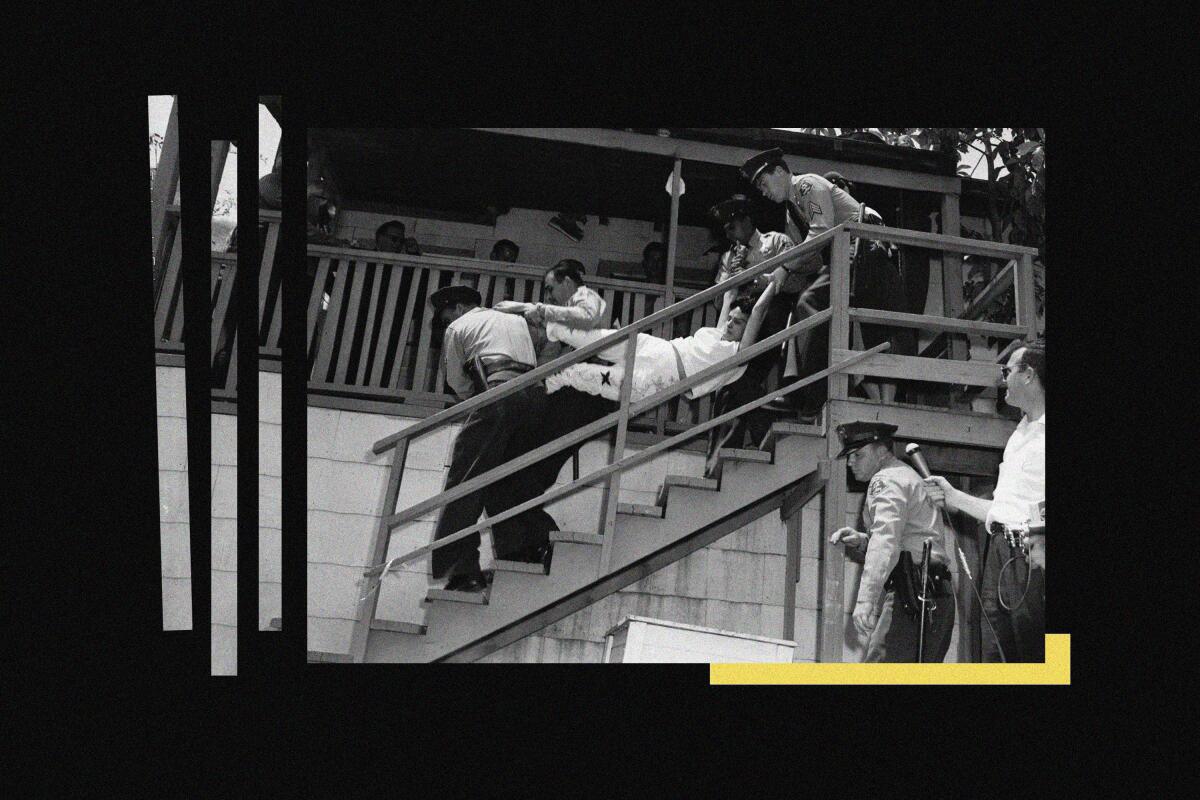
- Share via
You cannot tell the story of Los Angeles without talking about housing.
That was my takeaway after reading this report by my colleagues Brittny Mejia, Liam Dillon, Gabrielle LaMarr LeMee and Sandhya Kambhampati, which delves into the subject of overcrowding.
According to a Times analysis of Census data, 3% of U.S. homes are overcrowded. For Los Angeles, that figure jumps up to 11%.
And no other neighborhood in Los Angeles is bearing the brunt of overcrowding, which the federal government defines as more than one person per room, more so than Pico-Union. The predominantly Latinx neighborhood has some 40,000 people crammed into 1.33 square miles.
This overcrowding is no accident, and my colleagues devote a good chunk of their story to explaining how we got here. At 5,485 words, their reports doubles as an excellent primer on the history of Los Angeles.
They start at the beginning, when the city was nothing more than “a fly-ridden settlement of tumble-down adobes, packs of feral dogs and [had] one of the nation’s highest murder rates,” and move on to the efforts by powerful people — including the Chandlers, the family that owned The Times — to persuade “desirable persons from all parts of the country” (i.e., white) to relocate to sunny California by promising them a slice of heaven.
Los Angeles was sold as a city that had the best of both worlds: all the amenities of a metropolis and enough space for a lawn. It would become “America’s white spot.”
The Latinx experience chronicled
Get the Latinx Files newsletter for stories that capture the multitudes within our communities.
You may occasionally receive promotional content from the Los Angeles Times.
But this paradise wasn’t for everyone. As my colleagues note, people of color were relegated to crowded slums, and decades of racially restrictive covenants ensured that they stayed there.
Housing is even central to one of the city’s biggest distractions (and sins).
In the early 1950s, hundreds of predominantly Mexican American families were evicted from Chavez Ravine by city officials, who wanted to use the land to build Elysian Park Heights. The neighborhood was meant to be the country’s largest public housing development.
It was never built. Real estate interests killed the project by launching a campaign that painted it as a Communist ploy. The Red Scare didn’t just end Elysian Park Heights. It also led to a change to the state Constitution that made it incredibly difficult to build public housing, which has contributed greatly to California’s current housing crisis.
By the 1970s, overcrowding became a major problem for the city, but nothing was done about it. As my colleagues note, it “radiated from the city throughout Southern California as communities responded mainly by attempting to push the masses elsewhere.” By 1990, Los Angeles became the most overcrowded city in the country, a dubious distinction it hasn’t relinquished in 30 years.
I encourage you to read the entirety of my colleagues’ story, which crams a century’s worth of history into a long read that provides a clear understanding of how Los Angeles came to be how it is. It also does a great job at connecting the dots between overcrowding and COVID-19 death rates—unsurprisingly, Pico-Union was disproportionately affected by the pandemic.
The report is also part of a broader Times project called “Packed In,” which includes a story by Liam Dillon that chronicles one family’s difficult journey to escape overcrowded housing, as well as an explainer on why it’s difficult to fix the issue and how it can be solved.
Consider subscribing to the Los Angeles Times
Your support helps us deliver the news that matters most. Become a subscriber.
Things we read this week that we think you should read
—Disgraced L.A. Councilmember Kevin De León gave his first public statements on Wednesday, speaking to Noticierio Univision and CBS Los Angeles. De León said he would not be resigning despite continuous public outcry.
— Those incredibly racist and anti-immigrant ads running during the Major League Baseball playoffs? Former Trump aide Stephen Miller is behind them, according to columnist Michael Hiltzik.
—Speaking of television, I’ve really been enjoying “Andor,” the Disney+ Star Wars series that serves as a prequel to “Rogue One,” which we all know is the best movie in the franchise (don’t @ me, bro). In case you missed it, the homie David Betancourt spoke to Diego Luna about bringing the character of Cassian Andor back to life.
— What is England’s carne de res with Mexico? First it was the “Great British Bake Off,” and now it’s chef Gordon Ramsay desecrating Mexican food.
— What I’m listening to: Just in time for the Spooky Szn, Fronterawave (a.k.a, Charlie Vela) has put out “Calavera,” an 8-track album of cumbia goth magic. “I kind of wanted it to feel like a dusty tape found in the attic of a haunted house,” he said of the album on Twitter. You can find it on Spotify and Apple Music.
—The Best Thing on the Latinternet: It’s been a week, so here’s a TikTok video of a dog in a cart designed to look like Sergio “Checo” Perez’s Formula One car, powered by his cycling human.
And now for something a little different
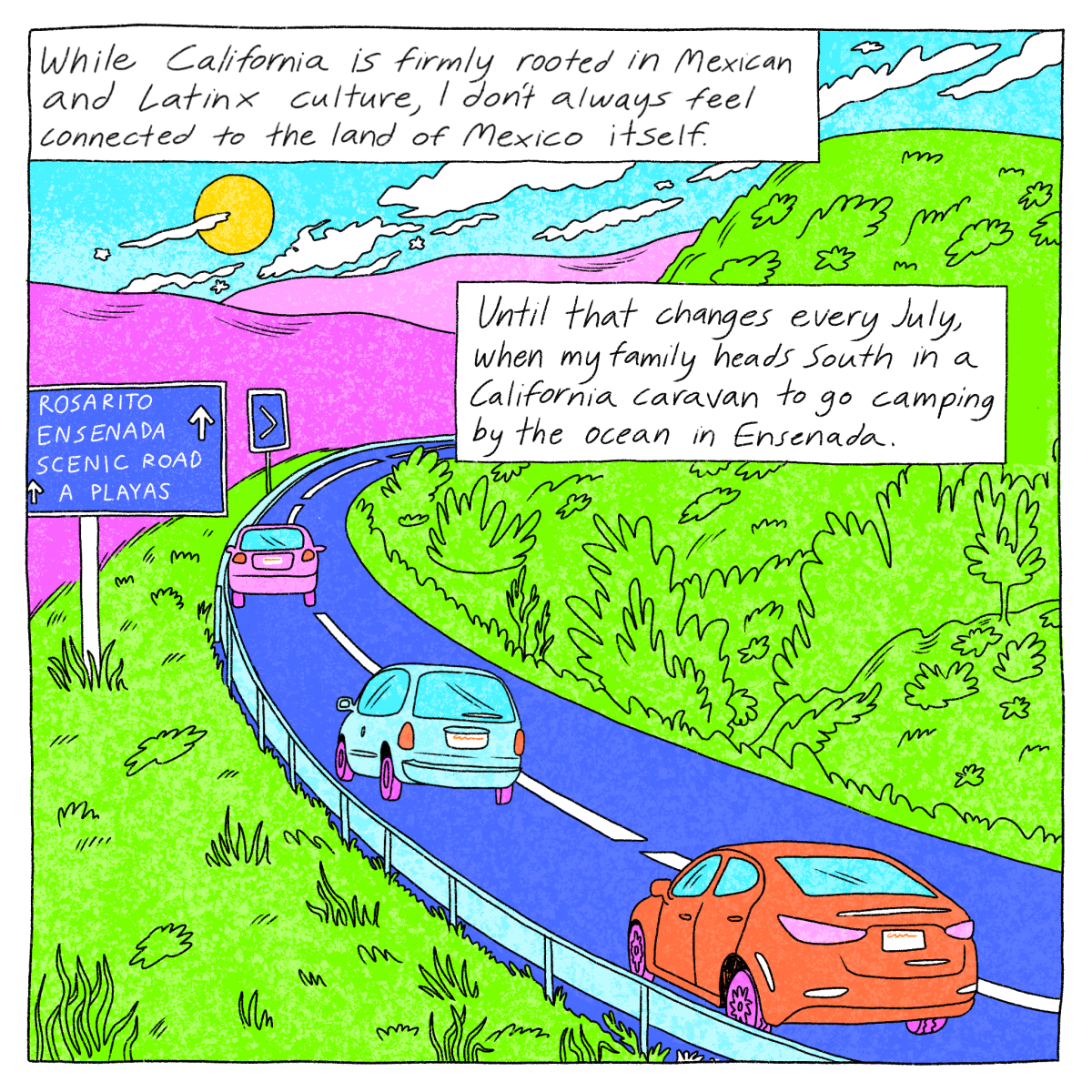
)
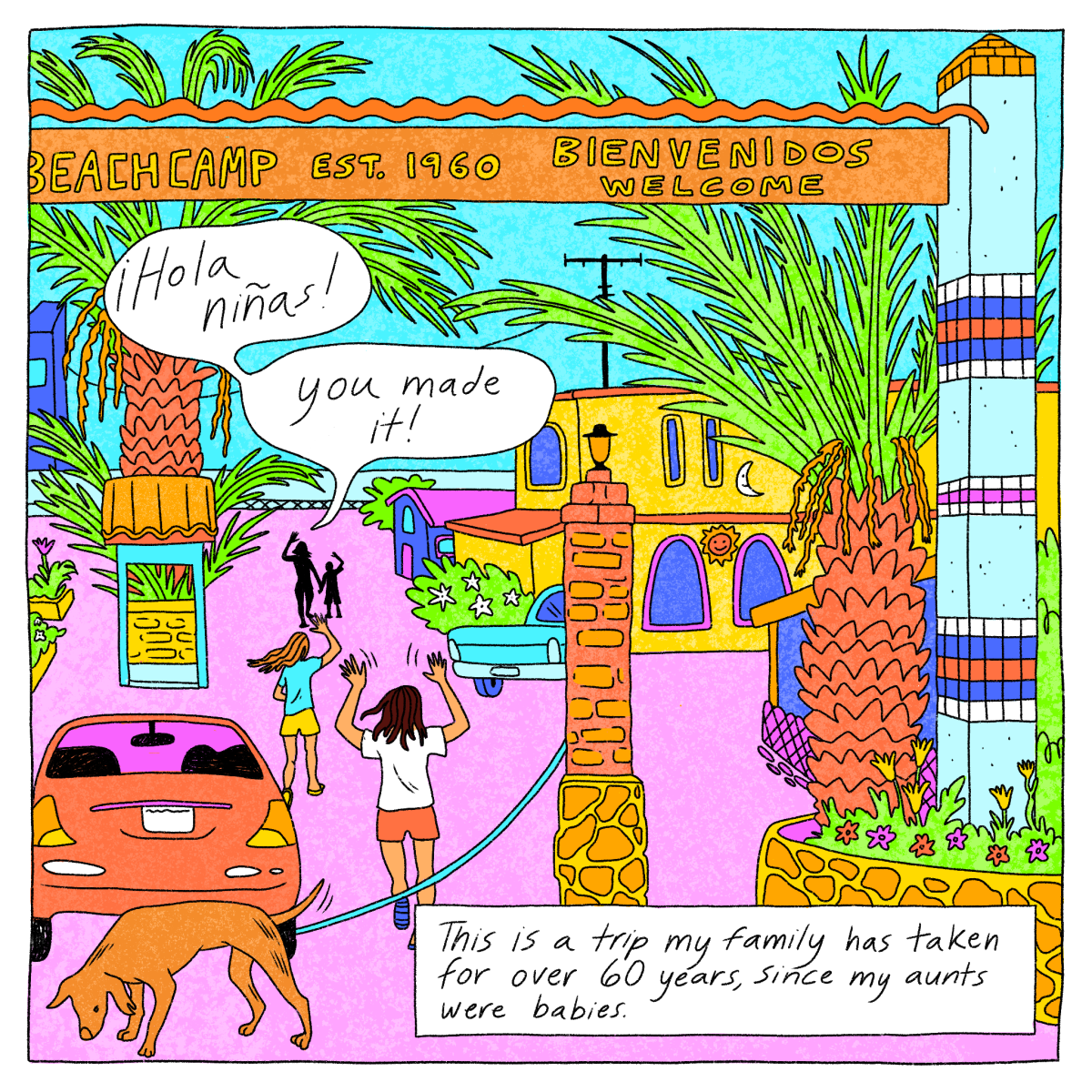
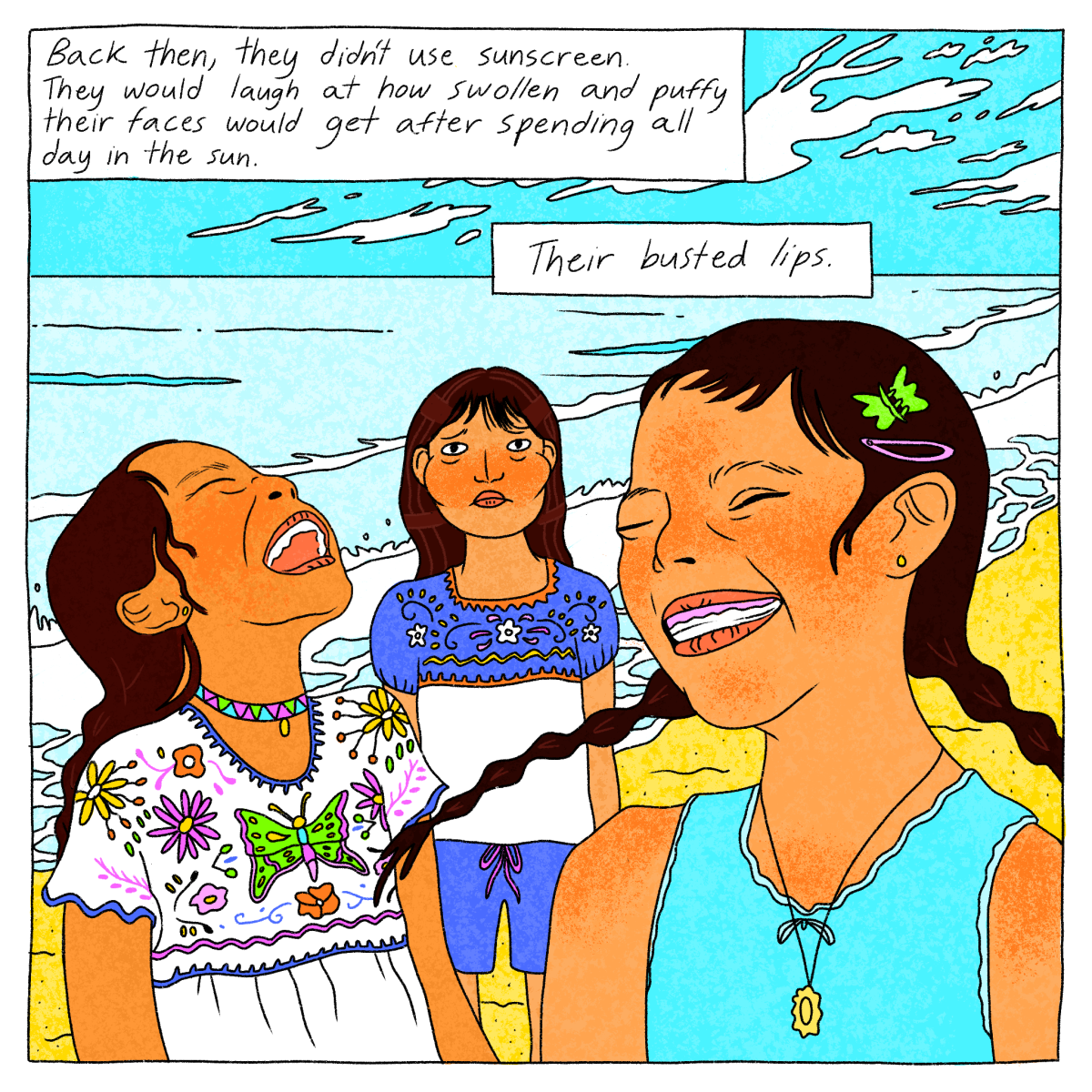
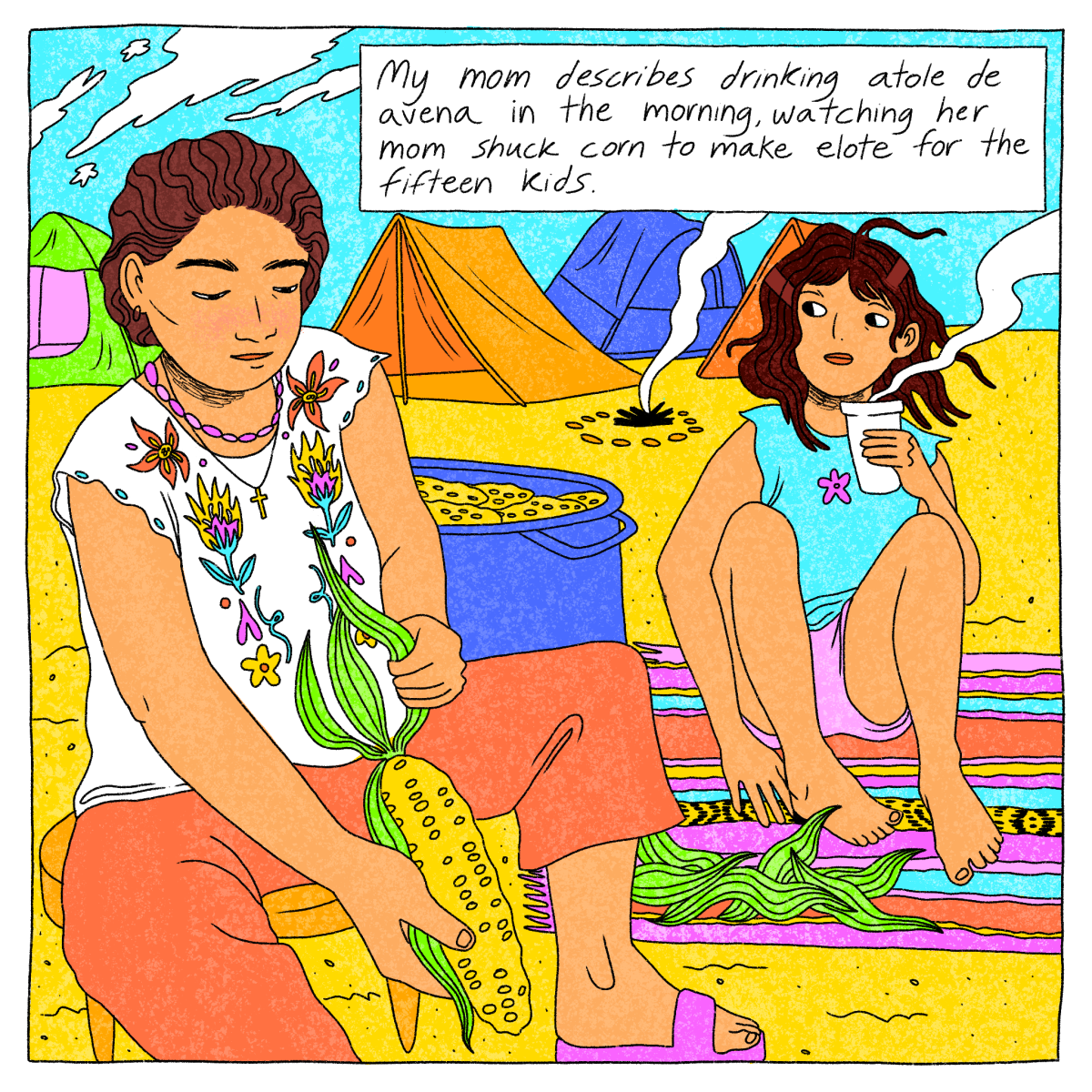
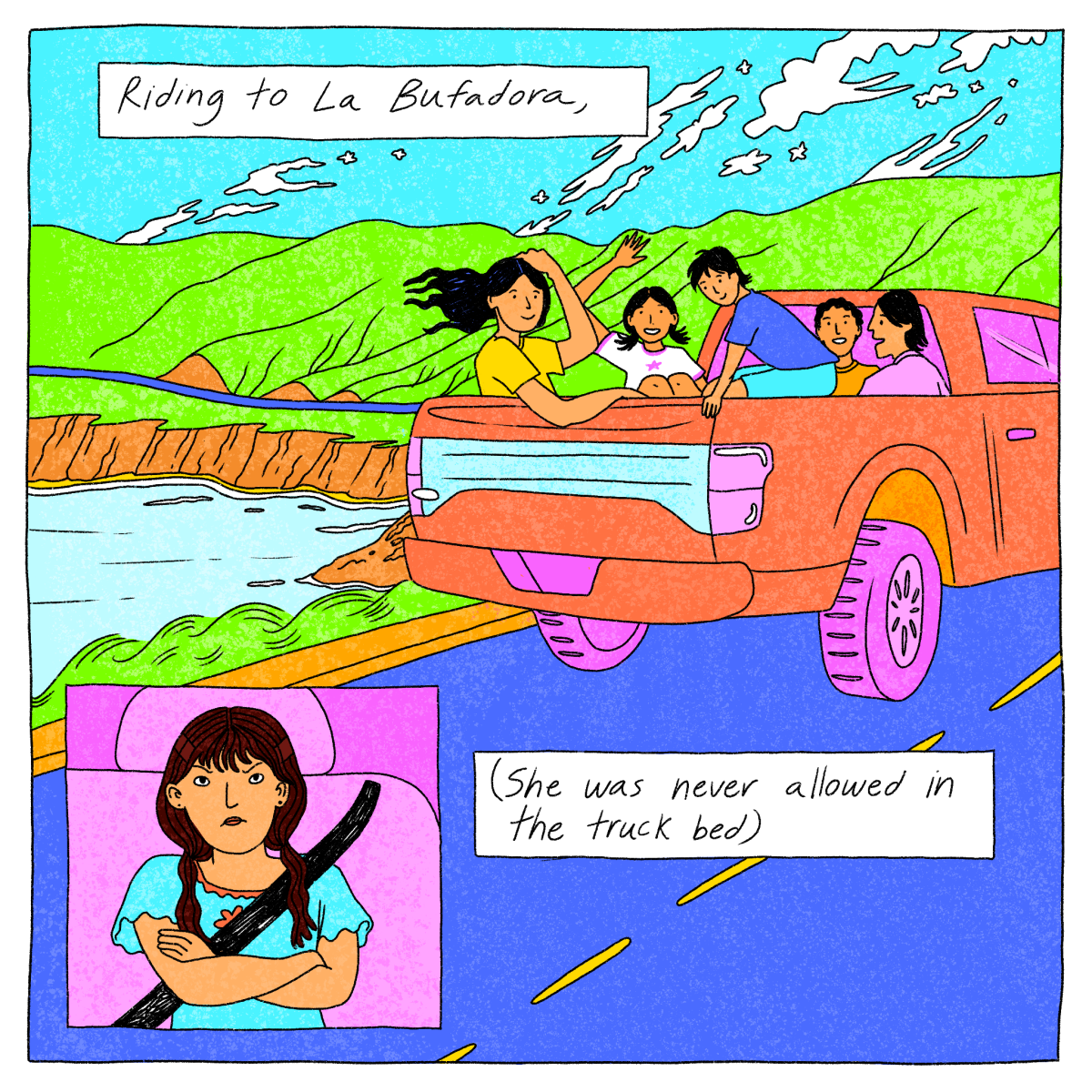
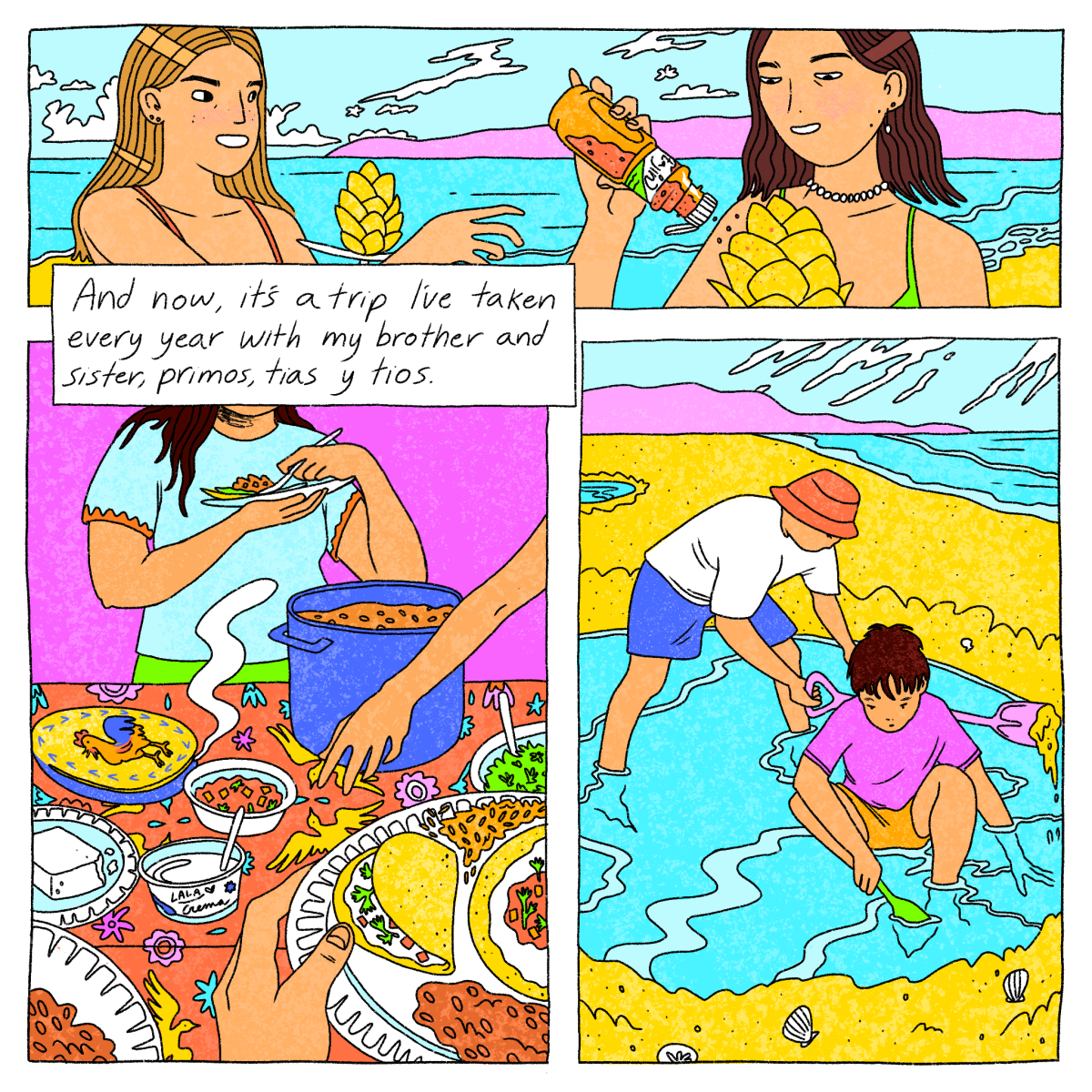
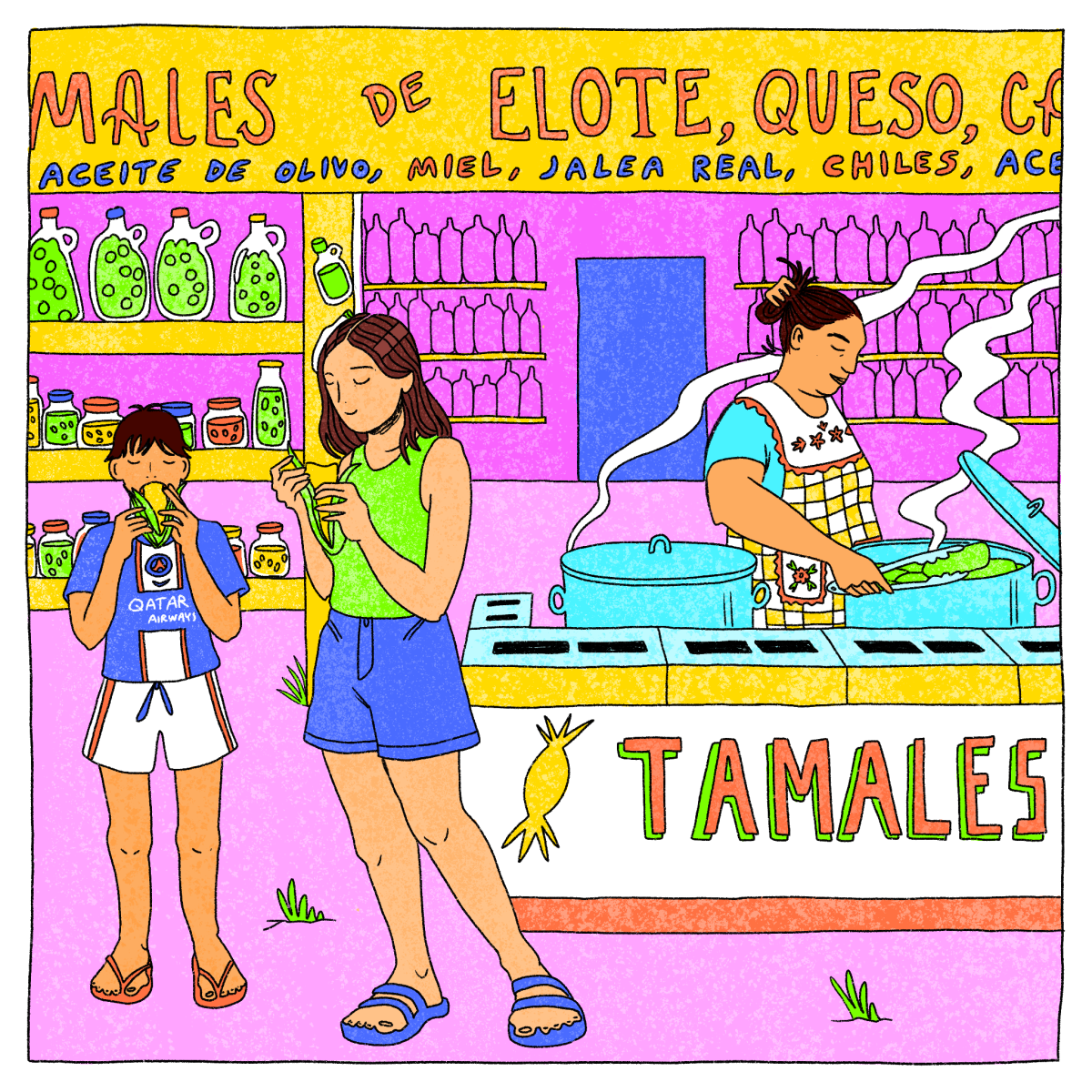
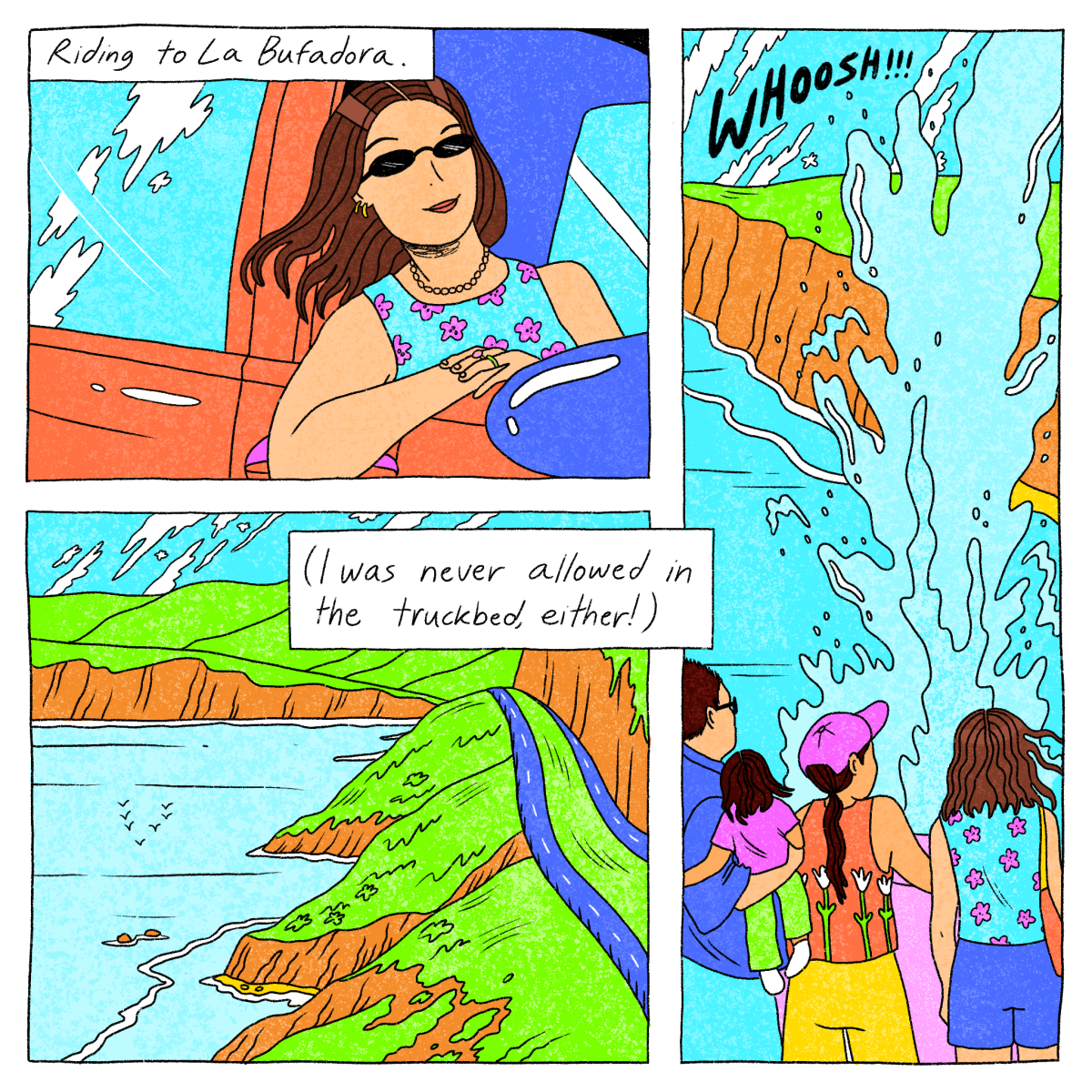
)
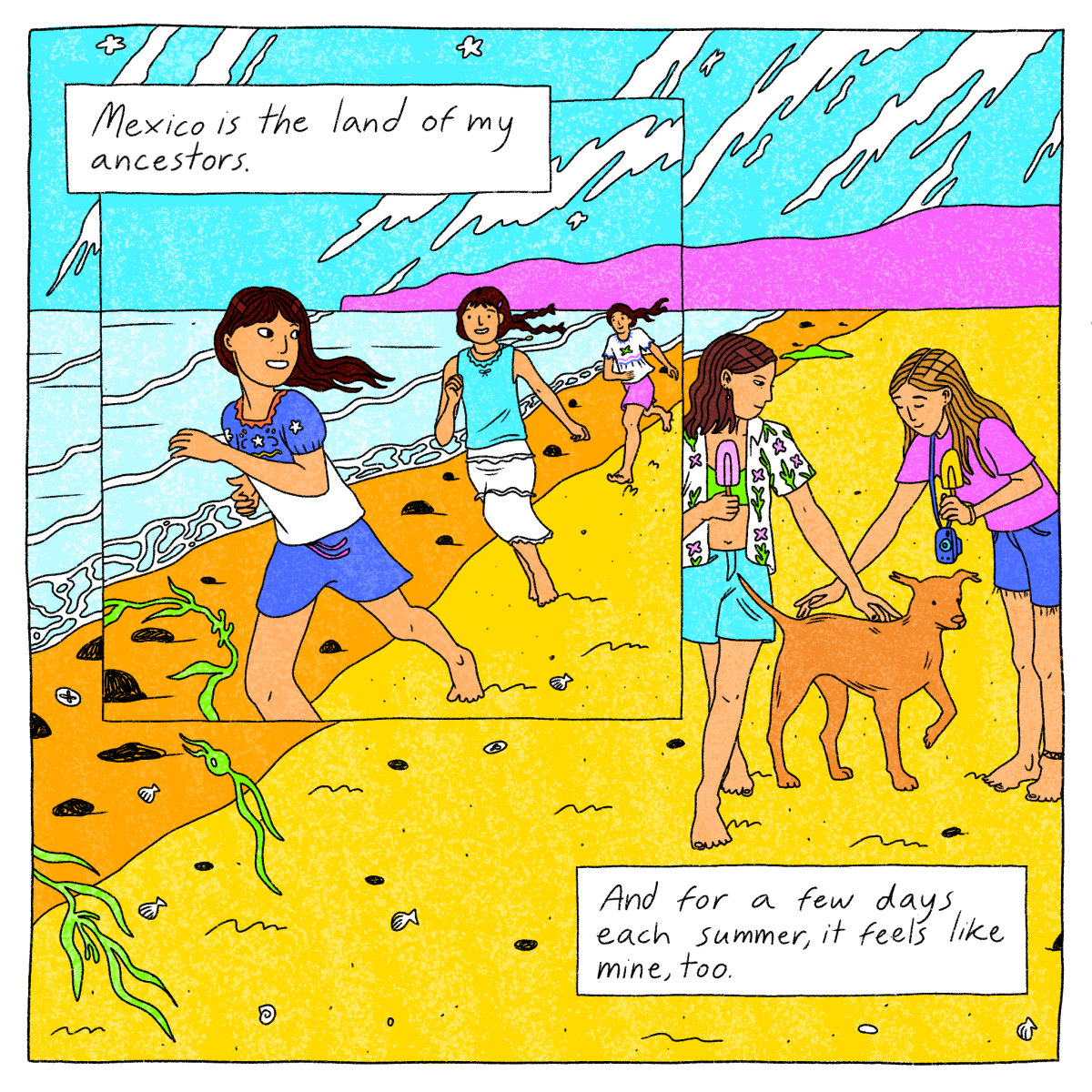
)
Casey Beifuss is a Mexican American illustrator and comic artist from San Diego. Her work is stylized, colorful, and energetic.
“I wrote this comic to share an intergenerational tradition that helps me connect with my family and culture. I really enjoyed the conversations I had with my mom and aunts while researching the history of our family trips to Ensenada. It was clear from the specificity of their memories that this tradition holds a lot of nostalgia and joy.”
Are you a Latinx artist? We want your help telling our stories. Send us your pitches for illustrations, comics, GIFs and more! Email our art director at martina.ibanezbaldor@latimes.com.
The Latinx experience chronicled
Get the Latinx Files newsletter for stories that capture the multitudes within our communities.
You may occasionally receive promotional content from the Los Angeles Times.







